Protect Your Data with Hard Disk Encryption and Regular Backups

Protect Your Data with Hard Disk Encryption and Regular Backups Keeping your data safe and secure is of utmost importance. Utilizing hard disk encryption can be a great way to do this, and when used in combination with partition encryption and encrypted containers, it can provide an additional layer of protection. For Windows, Bitlocker is an excellent tool to use while Mac OS users can opt for FileVault. However, no matter what encryption you choose, it is essential to regularly backup your data. Warning! Utilizing hard disk encryption is only the first line of defense against attackers. It is important to regularly backup your data to ensure your safety and security. Protect Your Data with Hard Disk Encryption and Regular Backups
Becoming Invisible Online: The Benefits and Risks of Using TOR, VPNs and Mesh Networks

Becoming Invisible Online: The Benefits and Risks of Using TOR, VPNs and Mesh Networks To become virtually invisible on the internet, tools such as TOR and VPNs, as well as mesh networks can be used. Utilizing Brave browser as a gateway to TOR is the quickest and most effective way to do this. Additionally, mesh nets and tools such as Firechat can be used to increase security, although Firechat was switched off at some point due to its efficiency. To become virtually invisible on the internet, tools such as TOR and VPNs, as well as mesh networks can be used. Utilizing Brave browser as a gateway to TOR is the quickest and most effective way to do this. Additionally, mesh nets and tools such as Firechat can be used to increase security, although Firechat was switched off at some point due to its efficiency. Warning! When using tools such as TOR, VPNs and mesh networks to increase your online security, take caution to not reveal any personal information that could be used to identify you. Additionally, be aware of the potential risks that come with using these tools, as they may not always be 100% secure. Becoming Invisible Online: The Benefits and Risks of Using TOR, VPNs and Mesh Networks
Create a Secure Passphrase: 4 Tips for Keeping Your Accounts Safe
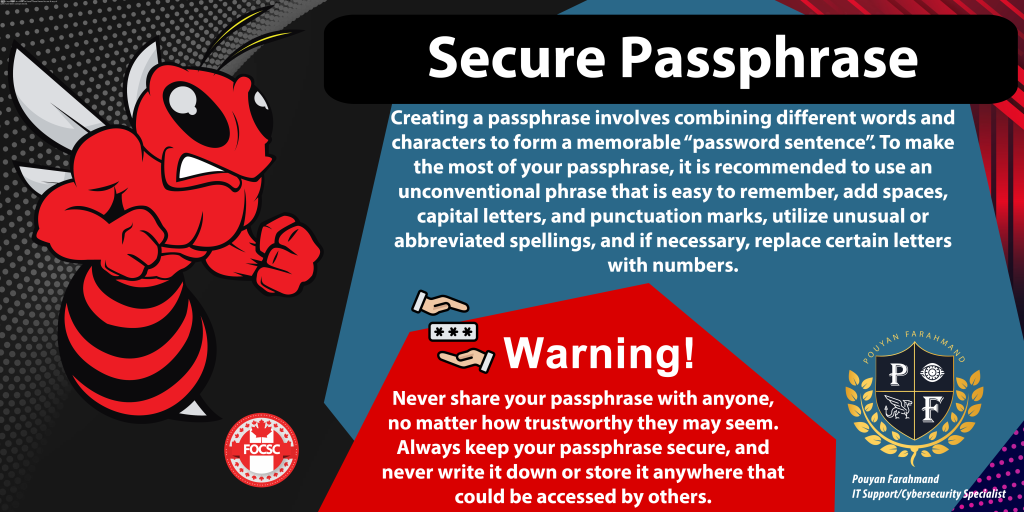
Secure Passphrase Creating a passphrase involves combining different words and characters to form a memorable “password sentence”. To make the most of your passphrase, it is recommended to use an unconventional phrase that is easy to remember, add spaces, capital letters, and punctuation marks, utilize unusual or abbreviated spellings, and if necessary, replace certain letters with numbers. Warning! Never share your passphrase with anyone, no matter how trustworthy they may seem. Always keep your passphrase secure, and never write it down or store it anywhere that could be accessed by others. Create a Secure Passphrase: 4 Tips for Keeping Your Accounts Safe
Sheepdip

Sheepdip A computer that is completely isolated from any other system or network is used to scan for potential malware or other malicious software. This system, known as a sheepdip, allows for the safe inspection of media and software without risking contamination of the larger network. Warning! Be wary of any media or software that is not scanned by a sheepdip system prior to use, as it may contain malicious content that could compromise the safety of your network. How to Keep Your Network Secure The Benefits of Sheepdip Scanning
Suicide Hacker
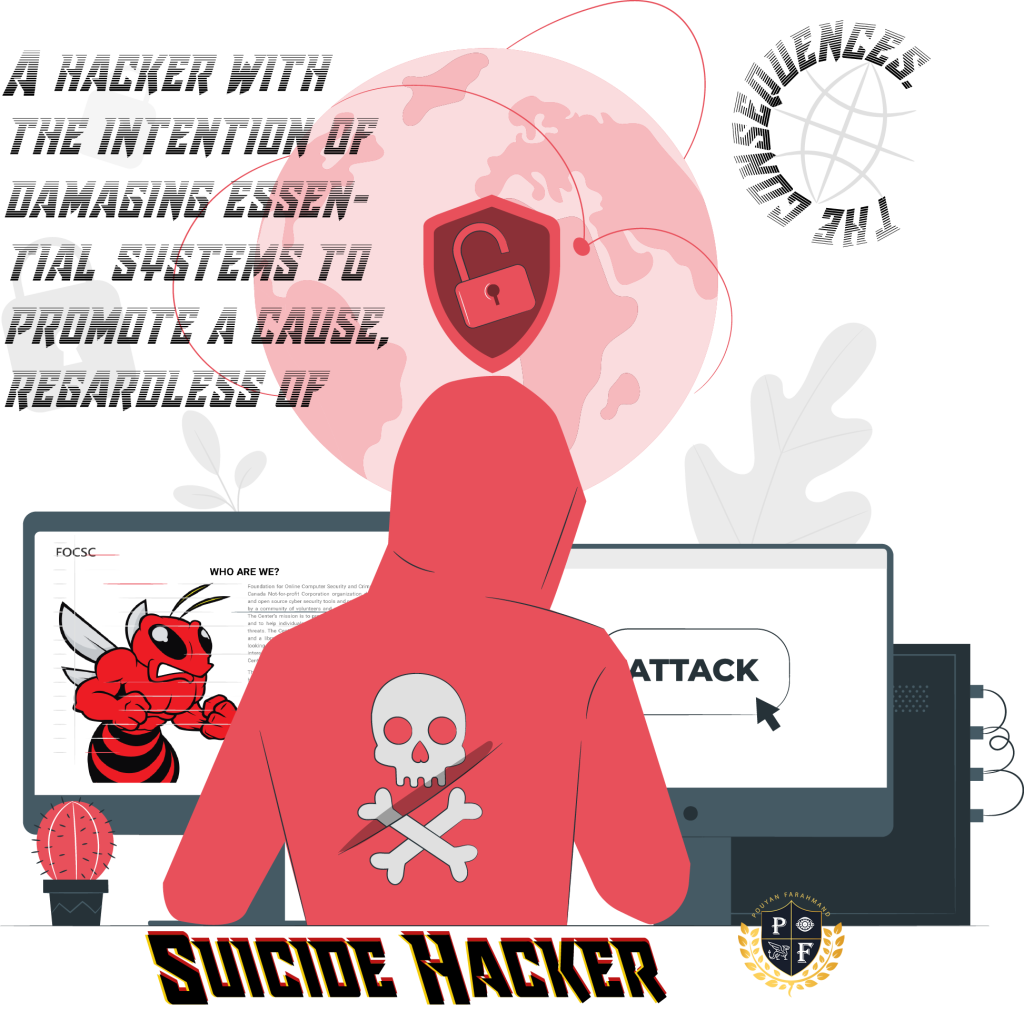
Suicide Hacker A hacker with the intention of damaging essential systems to promote a cause, regardless of the consequences. Are Suicide Hackers a Real Danger? | Exploring the World of Suicide Hackers
Operating system (OS) attacks
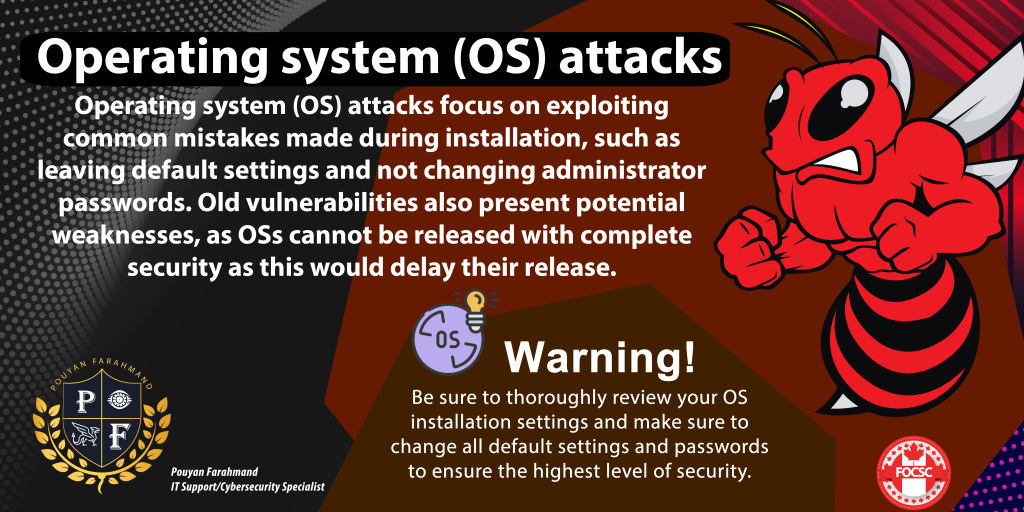
Operating system (OS) attacks Operating system (OS) attacks focus on exploiting common mistakes made during installation, such as leaving default settings and not changing administrator passwords. Old vulnerabilities also present potential weaknesses, as OSs cannot be released with complete security as this would delay their release. Warning! Be sure to thoroughly review your OS installation settings and make sure to change all default settings and passwords to ensure the highest level of security. Secure Your Operating System Now Protect Yourself from OS Attacks!
Slowloris Attacks
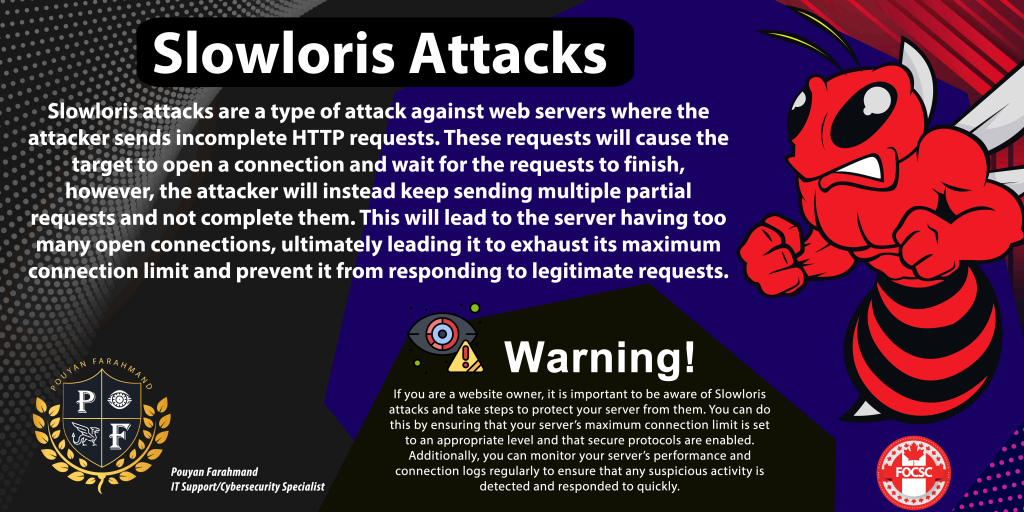
Slowloris Attacks Slowloris attacks are a type of attack against web servers where the attacker sends incomplete HTTP requests. These requests will cause the target to open a connection and wait for the requests to finish, however, the attacker will instead keep sending multiple partial requests and not complete them. This will lead to the server having too many open connections, ultimately leading it to exhaust its maximum connection limit and prevent it from responding to legitimate requests. Warning! If you are a website owner, it is important to be aware of Slowloris attacks and take steps to protect your server from them. You can do this by ensuring that your server’s maximum connection limit is set to an appropriate level and that secure protocols are enabled. Additionally, you can monitor your server’s performance and connection logs regularly to ensure that any suspicious activity is detected and responded to quickly.
HTTP Post DoS Attacks
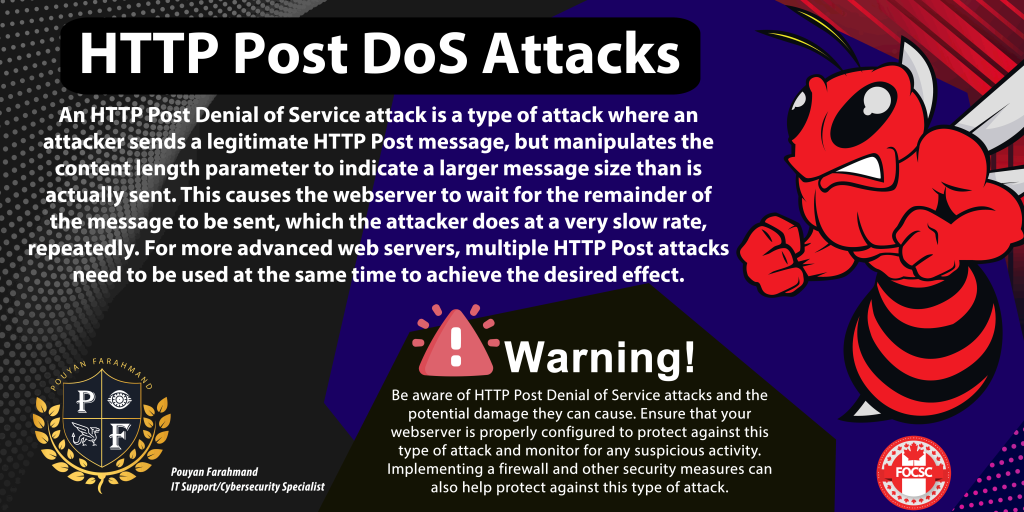
HTTP Post DoS Attacks An HTTP Post Denial of Service attack is a type of attack where an attacker sends a legitimate HTTP Post message, but manipulates the content length parameter to indicate a larger message size than is actually sent. This causes the webserver to wait for the remainder of the message to be sent, which the attacker does at a very slow rate, repeatedly. For more advanced web servers, multiple HTTP Post attacks need to be used at the same time to achieve the desired effect. Warning! Be aware of HTTP Post Denial of Service attacks and the potential damage they can cause. Ensure that your webserver is properly configured to protect against this type of attack and monitor for any suspicious activity. Implementing a firewall and other security measures can also help protect against this type of attack. Don’t Get Caught off Guard: Protect Against HTTP Post Denial of Service Attacks
Volumetric Attacks
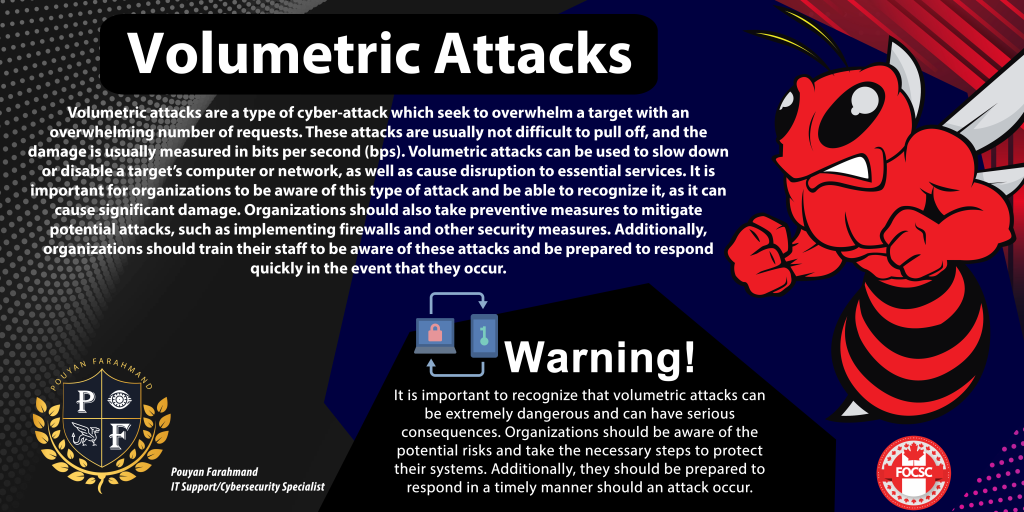
Volumetric Attacks Volumetric attacks are a type of cyber-attack which seek to overwhelm a target with an overwhelming number of requests. These attacks are usually not difficult to pull off, and the damage is usually measured in bits per second (bps). Volumetric attacks can be used to slow down or disable a target’s computer or network, as well as cause disruption to essential services. It is important for organizations to be aware of this type of attack and be able to recognize it, as it can cause significant damage. Organizations should also take preventive measures to mitigate potential attacks, such as implementing firewalls and other security measures. Additionally, organizations should train their staff to be aware of these attacks and be prepared to respond quickly in the event that they occur. Warning! It is important to recognize that volumetric attacks can be extremely dangerous and can have serious consequences. Organizations should be aware of the potential risks and take the necessary steps to protect their systems. Additionally, they should be prepared to respond in a timely manner should an attack occur.
Fail2Ban
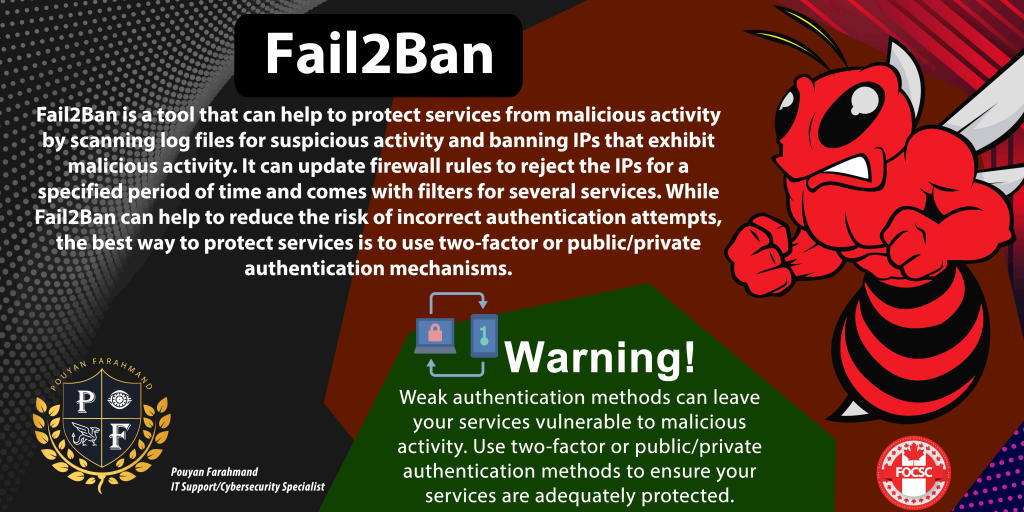
Fail2Ban Fail2Ban is a tool that can help to protect services from malicious activity by scanning log files for suspicious activity and banning IPs that exhibit malicious activity. It can update firewall rules to reject the IPs for a specified period of time and comes with filters for several services. While Fail2Ban can help to reduce the risk of incorrect authentication attempts, the best way to protect services is to use two-factor or public/private authentication mechanisms. Warning! Weak authentication methods can leave your services vulnerable to malicious activity. Use two-factor or public/private authentication methods to ensure your services are adequately protected.
